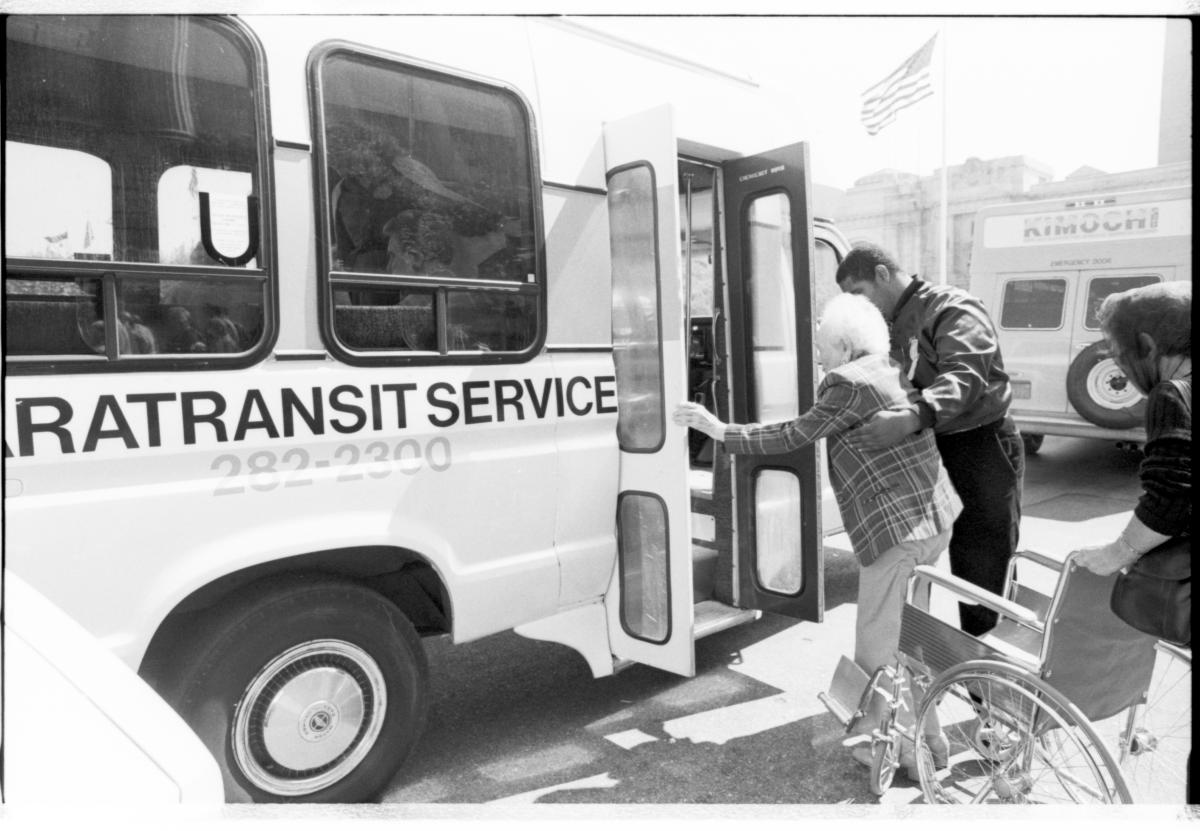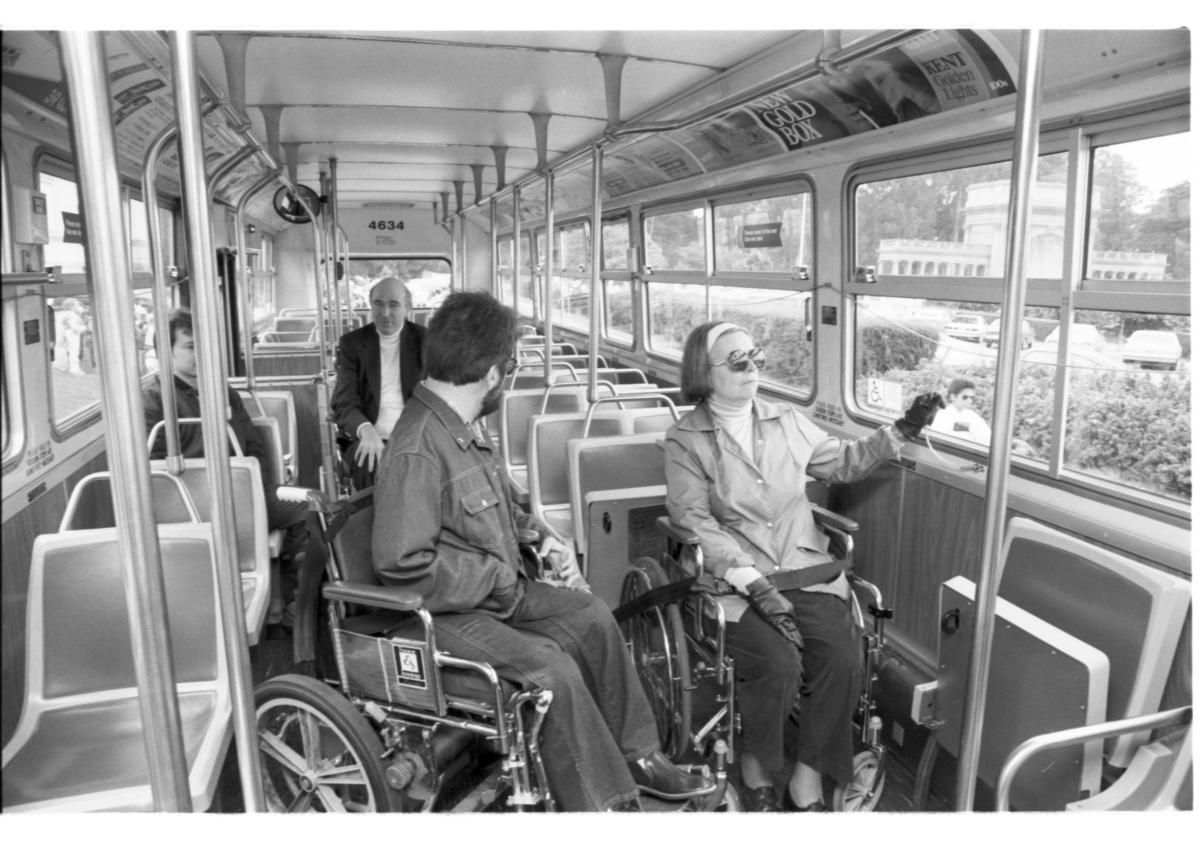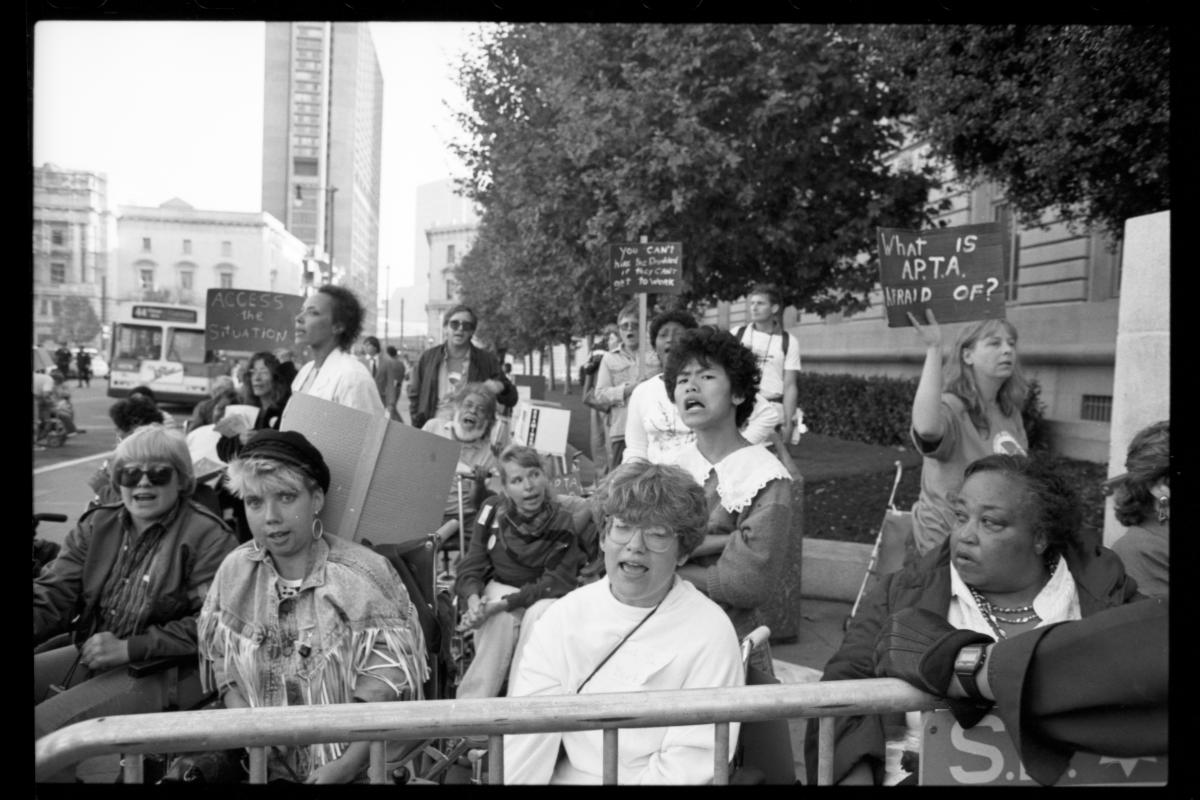Accessible Services Mission Statement
In pursuit of equity and inclusion, the Accessible Services Section of the SFMTA supports implementation of system-wide Muni transit improvements that meet and exceed the standards set by the Americans with Disabilities Act (ADA); advances the design of streets and sidewalks with the everyday lives of seniors and people with disabilities in mind; and actively shapes the agency’s approach to emerging mobility services and technologies so that they are accessible and affordable. We also oversee SF Paratransit and mobility management programs to address transportation gaps and barriers for older adults and people with disabilities in flexible and innovative ways.
Roles and Responsibilities of the Accessible Services Section
The SFMTA's Accessible Services Section is housed within the Taxis, Access, and Mobility Services (TAMS) Division. The work of the TAMS division is anchored in making the transportation system more accessible. The Accessible Services Section works to ensure the transportation system of the City and County of San Francisco is accessible to older adults and people with disabilities. The team provides technical expertise and assistance to other SFMTA divisions that deliver all the SFMTA’s services, including fixed-route transit, paratransit, capital projects and construction, parking, bicycle and pedestrian projects and permitted mobility services. Members of the team also operate the San Francisco Regional Transit Connection Discount Card (RTC) Office, providing free or reduced transit options to people with qualifying disabilities.
History and Achievements
The modern disability rights movement has its origins in the Bay Area. Stemming from this activism, San Francisco’s accessible transportation services began with paratransit and transit, expanding to other aspects of transportation as the agency’s mission has broadened. The program has its origins in Muni’s support of the Cannon Kip Community House Operation Transportation Program, which began in July 1977.
Cannon Kip established San Francisco’s first paratransit program, operating 20 vans and buses to transport people with disabilities and older adults. Eleven of those vans had wheelchair lifts. A Cannon Kip newsletter from July 1980 notes that “Cannon Kip-Operation Transportation is philosophically committed to the concept of total accessibility on all transit systems for all citizens.” While Muni was always a primary funder of the program, Muni’s (SF Municipal Railway) Elderly and Handicapped Program Office took over the entire Canon Kip operation in the early 1980s when Muni contracted with the city’s first paratransit broker. Muni’s paratransit program continues to this day. Under the Elderly and Handicapped Program Office, the first reduced fares for seniors and people with disabilities went into effect in the late 1970s and early 1980s, setting another long-term precedent.
Figure 1. A SF Paratransit staff member helps a wheelchair user onto a paratransit van at the Ten Year Anniversary Party of Paratransit at City Hall, September 21, 1987

Figure 2. Testing Wheelchair Access for the Mayor's Council on Disability Concerns on Muni Flyer Bus, July 25, 1985

As a leader in the field of accessibility and disabled access, what is now the Accessible Services Section owes much to the legacy of the Disability Rights Movement and the tireless work of disability activists in the Bay Area. Community advisory committees for both paratransit and Muni accessibility — the Paratransit Coordinating Council (PCC) and Multimodal Accessibility Advisory Committee (MAAC), respectively — have played key roles in collaborating with the Accessible Services Section and in providing a consistent conduit for public engagement for over 43 years.
Figure 3. ADAPT Disability Rights Protesters at American Public Transportation Association Reception at City Hall, September 27, 1987

In the late 1990s and early 2000s, with the merging of the SF Municipal Railway and Department of Parking and Traffic into the San Francisco Municipal Transportation Agency (SFMTA) and the 2009 incorporation of the Taxi Commission into the SFMTA, the purview of Muni’s original accessibility office expanded as well. Today, the Accessible Services Section works with nearly every division at the agency to make sure that not only fixed-route transit service is accessible, and that we provide high-quality paratransit, but that all elements of street design (e.g. bike lanes, parking, transit lanes, construction mitigation, traffic infrastructure, pedestrian improvements, etc.) are accessible and help provide greater access to transportation for everyone. The consolidation of the SFMTA allows for more efficient and robust collaboration between different facets of transportation on accessibility issues.
Although the SFMTA and the State of California both enacted transit accessibility improvements prior to the passage of the Americans with Disabilities Act (ADA), it became law of the land in 1990 and codified what the SFMTA had already determined: that both fixed route accessibility and Paratransit were needed to meet the transportation needs of people with disabilities.
After the passage and enactment of the ADA, challenges remain. The SFMTA is committed to both “the letter of the law” and the “spirit of the law,” reaching above and beyond minimum ADA standards to meet the needs of our patrons. This is especially true in a city like San Francisco with a variety of terrain (steep slopes, parks, shoreline, flatlands, etc.) and a tapestry of urban densities — from the Sunset to SoMA to the Dogpatch to the Excelsior and beyond. This requires Accessible Services staff to work with engineers, planners, public information officers, traffic controllers, designers and a variety of city agencies and departments to ensure that the SFMTA’s projects both meet regulations and are readily usable by the public we serve.